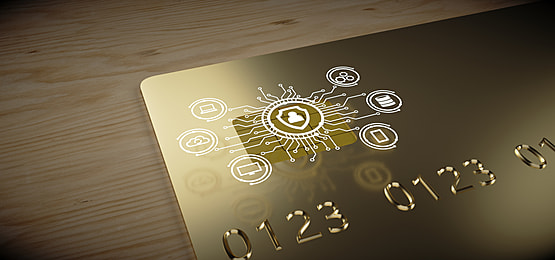Project 2025: Tired of Living Paycheck to Paycheck? Break the Cycle Now With This Trick

In the face of rising inflation and mounting financial pressures, many individuals find themselves stuck in the paycheck-to-paycheck cycle. Approximately 62% of Americans face this reality, regardless of whether their income is modest or substantial. Even six-figure earners aren’t immune to this challenge, often struggling to make ends meet without the security of a financial buffer. If you are caught in this loop, it can feel like a never-ending battle to stay afloat. But there is a way out—one that doesn’t require an influx of income but rather a shift in financial strategy.

Why Budgeting Isn’t Enough: The Pitfalls of Relying on Your Paycheck
Over the years, through coaching thousands of clients, I’ve learned that traditional budgeting is often inadequate for those living paycheck to paycheck. The common mistake is relying on each paycheck to cover the next month’s expenses. When this cycle continues, it becomes nearly impossible to build long-term wealth or plan for future financial goals like paying off debt or investing.
The crux of the issue lies in a mindset and habit: spending before earning. When money is already earmarked for bills before it even hits the account, it’s hard to break free. Without a financial cushion, you’re not only postponing your dreams of financial freedom but also reinforcing the belief that there will never be enough money.

The Key to Breaking Free: The Cash-Flow Cushion
Enter the “cash-flow cushion”—a game-changing strategy that is often overlooked in the pursuit of financial stability. A cash-flow cushion is a reserve of funds kept in your checking account to cover your monthly expenses, allowing you to avoid the panic and stress of waiting for your next paycheck. This is not your emergency fund (though that is important too), but a protective layer between you and the paycheck-to-paycheck trap.
To put it simply: If you typically spend $3,000 a month on expenses, you should aim to keep at least that amount readily available in your checking account. The cushion will absorb the unpredictability of life, ensuring you don’t have to dip into credit cards or loans to cover essential costs.
How the Cash-Flow Cushion Helps Reach Your Financial Goals
One of the primary reasons people fall into debt is the lack of a cash-flow cushion. Without this buffer, many find themselves relying on credit cards, loans, or overdrafts to cover essential expenses. The ability to access this financial safety net without scrambling for funds not only reduces stress but also removes the mental strain of relying on external credit.
Research from Bankrate’s 2024 annual report reveals that 66% of US adults would be deeply concerned if they lost their primary income source due to insufficient savings. Having a cash-flow cushion mitigates this worry, providing peace of mind and financial flexibility, enabling you to focus on larger financial goals like debt repayment or investing.
Building Your Cash-Flow Cushion: A Step-by-Step Guide
To build your cushion, start by evaluating your monthly expenses. Identify all essential costs, including:
- Housing: Rent or mortgage payments
- Utilities: Water, electricity, internet
- Transportation: Car payments, insurance, fuel
- Food and Groceries
- Health-related costs
Let’s say your monthly expenses total $3,610, as illustrated below:
| Expense | Monthly Cost |
|---|---|
| Housing | $1,800 |
| Utilities | $500 |
| Car Payment | $400 |
| Car Insurance | $160 |
| Food | $400 |
| Essential Health | $350 |
| Total Cushion | $3,610 |
Once you’ve calculated your total monthly expenses, set aside funds to build your cushion, even if it means cutting back temporarily. For example, you could start by reallocating a portion of your emergency savings or automating transfers from your paycheck into your checking account.
It might take a few months, but gradually building this cushion will yield significant financial security.
Financial Tip: Keep Your Cushion Updated
As life’s expenses evolve, track your budget regularly—at least quarterly—to ensure your cushion continues to cover unforeseen costs. If you encounter unexpected financial burdens or a temporary reduction in income, replenish your cushion as soon as possible to maintain peace of mind and financial stability.
Maintaining Your Cushion and Prioritizing Financial Goals
Once your cash-flow cushion is built, the key to success is consistency. To keep it intact, consider automating transfers from your savings account to your checking account on a regular basis. This will prevent you from inadvertently dipping into it for non-essential purchases.
While building this cushion is a critical step, it’s not an end-all-be-all. Once you have your financial cushion in place, you can confidently focus on paying down debt, investing for the future, and tackling larger financial goals. The cushion acts as a financial foundation that allows you to prioritize your debt reduction and investments without living paycheck to paycheck.
Why a Cash-Flow Cushion Matters More Than Debt Repayment or Investing
You may be questioning whether it’s wise to keep funds in a low-interest checking account instead of funneling them into paying off debt or investing. While it is important to pay down debt and grow your investments, a solid cash-flow cushion can actually help you avoid accumulating more debt in the first place.
Many of my clients’ consumer debts could have been avoided had they prioritized building a cushion to handle routine expenses. Without this financial buffer, it’s easy to fall into the trap of relying on credit cards to make up the shortfall—especially in times of economic uncertainty.
I often remind my clients that debt represents your past, while investing represents your future. The best way to tackle both is by making smart, forward-thinking financial decisions today.
Conclusion: Taking Control of Your Financial Future
Breaking the paycheck-to-paycheck cycle doesn’t require earning more money—it requires being smarter about the money you already have. Start today by building your cash-flow cushion, and you’ll gain the financial security and peace of mind you need to tackle debt, invest, and ultimately, achieve your financial goals.
So, what are you waiting for? It’s time to break free from financial stress and take charge of your future—one cushion at a time.
Culled From CNET.com




